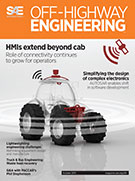Training / Education
Fundamentals of High Voltage xEV, Safety, and PPE
2024-06-20
Do you know what personal protective equipment (PPE), tools, and instruments are needed to keep you safe around high voltage (HV) vehicles? Are you aware of how to protect yourself or your employees when working around high voltage systems and platforms? Safety is paramount when working around any type of high voltage. As electric vehicles (EV) and EV fleets become more prevalent, the critical need for OEMs, suppliers, companies, and organizations to provide comprehensive safety training for teams working with or around xEV systems and platforms increases.



